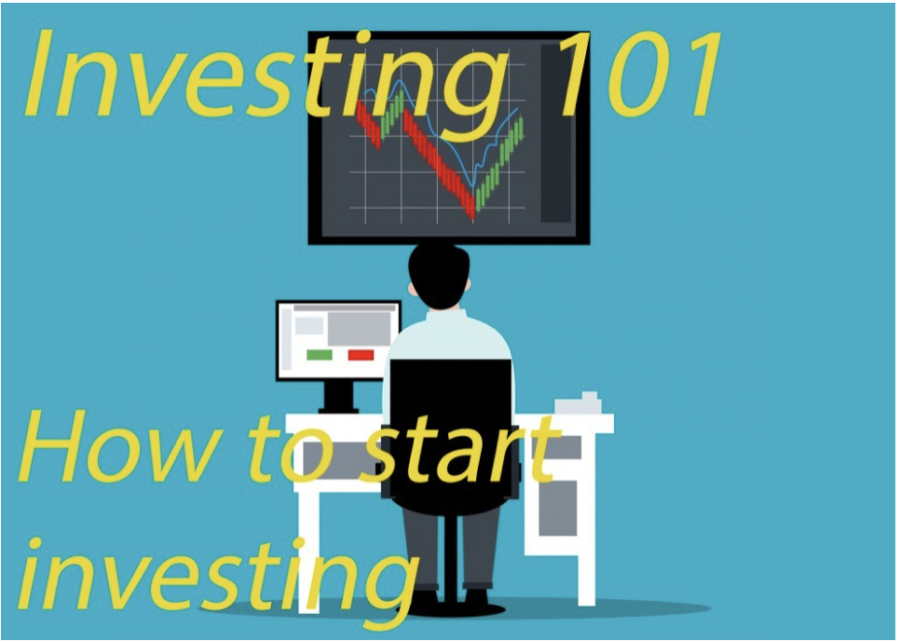Have you wanted to start investing but did not know where to start? Welcome to Investing 101. We will teach you the do and do nots of investing.
How to invest in five simple steps:
Step One: Decide how you want to start investing.
Deciding on what to invest in can be a little tricky.
There are multiple ways to get involved in the stock market.
For example, you can invest in individual stocks. When you invest in individual stocks, make sure you can dedicate the time to research and evaluate stocks daily. If you think you can do this, then investing in individual stocks is definitely the way to go.
If you do not have the time or if buying individual stocks is too daunting of a prospect, you could also invest in index funds. An index fund compiles a large number of stocks or bonds that are linked to a certain market, making these investments more stable and much less volatile than your single stock investment. Index funds tend to have significantly lower costs and will match the long-term performances of their underlying indexes.
Another option that has become popular in recent years is the robo-advisor. A robo-advisor invests your money on your behalf. The robo-advisor creates a diverse portfolio of index funds appropriate to your investing goals and risk tolerance. Many people have been choosing the robo-advisor route because they can optimize the gain you get from your investments, along with optimizing tax efficiency.
Step Two: Decide how much money you are willing to invest in stocks.
The stock market is not a place for money that you are going to need soon. Due to the stock market’s volatility, you do not want to put your life savings into the stock market all at once. For example, in 2020, when the pandemic first hit, the market plunged by more than 40%. However, the market did bounce back to an all-time high within six months.
Mr. Allan, a teacher of various humanities classes including economics and the leader of last year’s Investing in the 21st Century Unbounded course at the Webb Schools, is ecstatic about the stock market and investing. He is also always willing to give advice on how to invest.
“Never invest more money than you are prepared to lose,” Mr. Allan said. “Remember that there are no guarantees nor safety nets.”
Make sure that the money you invest is money that you are comfortable losing, so start small.
“I would say it’s extremely important to monitor your emotions and try to not let them get the best of you; risk management is huge, and patience in general,” Maksym Graham (‘23) said.
Step Three: Once you have done your research open an investment account.
In order to invest, you will need to open a brokerage account. Brokerage accounts are offered by investment companies such as Charles Schwab, E Trade, Fidelity, and TD Ameritrade. Make sure to pay attention to any fees that a brokerage company may levy, as these fees can add up as your starting your account.
Before opening an account, you should choose what type of account you will need. You can either open a standard brokerage account or an individual retirement account.
Both types will give you the opportunity to buy ETFs, mutual funds, and stocks. If you plan on investing a large amount of money, then the standard brokerage account is the way to go since the IRA (individual retirement account) has an annual limit. Unless you are planning on retiring soon, in which case you do not have to worry about the IRA, just stick to the standard brokerage account.
Step Four: Pick which stocks you want to invest in.
Now that you have the ability to buy and sell stocks, it is time to choose a stock to invest in.
Diversify your portfolio: if you were to put all your money into two stocks, and one of them were to crash, you would lose half of your money. On the other hand, if you were to invest in multiple stocks, and one were to crash, it would not be the end of the world.
“A great way to diversify is to buy mutual funds or ETFs. You can invest in index funds which track a wide variety of stocks in the major indexes (DOW, NASDAQ, Russel 2000 or the most popular — S&P 500). You can also invest in funds that focus on specific industries (automotive, pharmaceutical, green energy, banks, fintech — the list is almost endless). This will ensure that you have a diverse portfolio,” Mr. Allan said.
Invest in stocks you have researched: by investing in stocks that are well vetted, you are able to be aware of any changes the company plans on making and can adjust how much money you want to put into your stock. For example, if the CEO of the company releases a statement such as “we will release over 500,000 cars by the end of the quarter,” stocks will go up and you will be one of the first to know. Also, make sure to pay attention to what analysts and professionals say, as they have a uniquely educated perspective. Just be careful, as the messages can cause volatility in the stocks as well.
Avoid high-volatility stocks until you are an experienced stock trader: do not invest in stocks that fluctuate constantly. Until you know how the stock market operates, we do not recommend investing in high-volatility stocks.
“If you choose to buy individual stocks, sticking with “blue chip” companies is smart when looking at the long term,” Mr. Allan. “They will have steady growth over years without high risk compared to smaller companies in the market. Traditionally, large cap companies can weather the storm of economic downturns better than small cap companies.”
Invest with your conscience: do not invest in a company or stock that you do not believe in, as through investing, you are giving a company capital to use as they please. If you disagree with, or find a company to be immoral, do not invest.
“Think about your investments in the long term (years, not months),” Mr. Allan said.“Buying and holding will bring about consistent growth compared to trying to time the market. The overall market will always follow a positive, upward trend with bumps on the way. Keep this in mind when investing.”
Step Five: Invest!
Now that know what stocks you want to invest in, along with how to invest, start investing!
Here are some extra resources that can help get you started:










